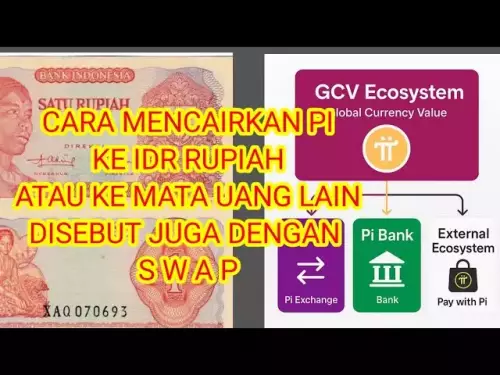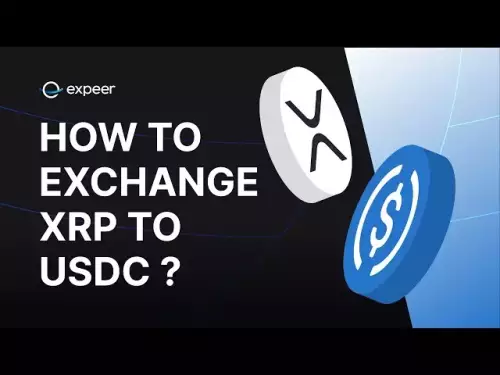-
 bitcoin
bitcoin $112715.707551 USD
-1.71% -
 ethereum
ethereum $4101.475385 USD
-3.01% -
 tether
tether $1.000644 USD
-0.02% -
 bnb
bnb $1207.619465 USD
-6.77% -
 xrp
xrp $2.501451 USD
-3.98% -
 solana
solana $202.947124 USD
-3.32% -
 usd-coin
usd-coin $1.000295 USD
0.04% -
 dogecoin
dogecoin $0.203884 USD
-4.47% -
 tron
tron $0.317154 USD
-1.72% -
 cardano
cardano $0.695009 USD
-4.43% -
 hyperliquid
hyperliquid $38.853961 USD
-8.23% -
 chainlink
chainlink $18.988674 USD
-4.64% -
 ethena-usde
ethena-usde $1.000233 USD
-0.03% -
 stellar
stellar $0.337050 USD
-3.63% -
 bitcoin-cash
bitcoin-cash $536.861728 USD
-1.28%
How to use Dogecoin for arbitrage trading? How to use cross-platform spreads?
Arbitrage trading with Dogecoin involves buying low on one exchange and selling high on another, requiring quick action and market understanding to profit from price differences.
Apr 29, 2025 at 12:56 am

Arbitrage trading with Dogecoin involves taking advantage of price differences across various exchanges to generate profit. This strategy requires a keen understanding of market dynamics and the ability to act quickly. In this article, we will explore how to effectively use Dogecoin for arbitrage trading and how to leverage cross-platform spreads to maximize your returns.
Understanding Arbitrage Trading with Dogecoin
Arbitrage trading is a technique used by traders to buy an asset on one platform where the price is low and sell it on another platform where the price is higher. With Dogecoin, this can be particularly lucrative due to its high volatility and the varying liquidity levels across different exchanges.
To start, you need to monitor the prices of Dogecoin on multiple exchanges simultaneously. Tools like CoinGecko or CoinMarketCap can help you track these prices in real-time. Once you identify a significant price difference, you can execute your arbitrage trade.
Setting Up for Dogecoin Arbitrage
Before you can begin arbitrage trading with Dogecoin, you need to set up accounts on multiple exchanges. Here are the steps to get started:
- Choose exchanges: Select exchanges that support Dogecoin and have good liquidity. Examples include Binance, Coinbase, and Kraken.
- Create accounts: Sign up for accounts on these exchanges. Ensure you complete all necessary KYC (Know Your Customer) procedures.
- Deposit funds: Fund your accounts with enough cryptocurrency or fiat to cover your trading activities.
- Set up API keys: If you plan to use automated trading bots, you will need to generate API keys for each exchange. Be sure to secure these keys and only give them to trusted applications.
Executing Dogecoin Arbitrage Trades
Once your accounts are set up, you can start executing arbitrage trades. Here’s how to do it:
- Identify price differences: Use price tracking tools to find exchanges where Dogecoin is trading at different prices.
- Calculate potential profit: Before executing a trade, calculate the potential profit after accounting for transaction fees and transfer times.
- Execute the trade: Buy Dogecoin on the exchange where the price is lower and sell it on the exchange where the price is higher. Ensure you do this quickly to capitalize on the price difference before it disappears.
- Transfer funds: After selling, you may need to transfer your profits back to your original exchange or to your wallet.
Using Cross-Platform Spreads for Dogecoin Arbitrage
Cross-platform spreads refer to the price differences between different trading platforms. These spreads can be exploited for arbitrage opportunities. Here’s how to use them effectively:
- Monitor multiple platforms: Keep an eye on the prices of Dogecoin across various exchanges. Use tools like CryptoCompare to track these spreads in real-time.
- Analyze liquidity: Higher liquidity on an exchange can lead to smaller spreads, making it harder to profit from arbitrage. Focus on exchanges with lower liquidity where larger spreads are more common.
- Execute trades quickly: Once you identify a profitable spread, execute your trades as quickly as possible. Delays can result in lost opportunities as prices can change rapidly.
Managing Risks in Dogecoin Arbitrage
Arbitrage trading, while potentially profitable, comes with its own set of risks. Here are some strategies to manage these risks:
- Understand transaction fees: Each exchange has its own fee structure. Make sure you account for these fees when calculating potential profits.
- Consider transfer times: The time it takes to transfer Dogecoin between exchanges can impact your arbitrage strategy. Faster transfers can help you capitalize on short-lived price differences.
- Use stop-loss orders: To protect against sudden price movements, consider using stop-loss orders to limit potential losses.
- Stay informed: Keep up with news and developments in the cryptocurrency space, as these can impact Dogecoin prices and arbitrage opportunities.
Tools and Software for Dogecoin Arbitrage
To streamline your arbitrage trading, consider using specialized tools and software. Here are some options:
- Arbitrage bots: Automated trading bots like HaasOnline or Cryptohopper can execute trades based on predefined criteria, helping you take advantage of price differences more efficiently.
- Price tracking tools: Use tools like Coinigy or TradingView to monitor Dogecoin prices across multiple exchanges in real-time.
- Spreadsheets and calculators: Create your own spreadsheets to track potential arbitrage opportunities and calculate profits after accounting for fees and transfer times.
Practical Example of Dogecoin Arbitrage
Let’s walk through a practical example of how to execute a Dogecoin arbitrage trade:
- Scenario: You notice that Dogecoin is trading at $0.30 on Exchange A and $0.32 on Exchange B.
- Action: You buy 1000 Dogecoin on Exchange A for $300.
- Transfer: You transfer the 1000 Dogecoin to Exchange B. Assume the transfer fee is negligible.
- Sell: You sell the 1000 Dogecoin on Exchange B for $320.
- Profit: After accounting for transaction fees (assume 0.5% on both exchanges), your profit is $320 - $300 - ($300 0.005) - ($320 0.005) = $19.40.
This example illustrates how you can profit from the price difference between two exchanges, but remember to always consider the fees and transfer times involved.
Frequently Asked Questions
Q: Can I use Dogecoin for arbitrage trading on decentralized exchanges (DEXs)?A: Yes, you can use Dogecoin for arbitrage trading on DEXs. However, the process may be more complex due to the decentralized nature of these platforms. You will need to consider factors like gas fees and the time it takes to execute trades on the blockchain.
Q: How do I handle the risk of price slippage during Dogecoin arbitrage?A: Price slippage can occur when the market moves against you between the time you place your buy and sell orders. To mitigate this risk, use limit orders instead of market orders, and consider using smaller trade sizes to minimize the impact of slippage.
Q: Are there any legal considerations I should be aware of when doing Dogecoin arbitrage?A: Legal considerations can vary by jurisdiction. Always ensure you comply with local regulations regarding cryptocurrency trading and taxation. It’s advisable to consult with a legal professional to understand the specific laws that apply to your situation.
Q: How can I automate my Dogecoin arbitrage trading?A: To automate Dogecoin arbitrage trading, you can use trading bots like HaasOnline or Cryptohopper. These bots can be programmed to monitor price differences and execute trades automatically based on your predefined criteria. Ensure you thoroughly test and monitor these bots to avoid unexpected losses.
Disclaimer:info@kdj.com
The information provided is not trading advice. kdj.com does not assume any responsibility for any investments made based on the information provided in this article. Cryptocurrencies are highly volatile and it is highly recommended that you invest with caution after thorough research!
If you believe that the content used on this website infringes your copyright, please contact us immediately (info@kdj.com) and we will delete it promptly.
- Zero Knowledge Proof, Whitelist, Blockchain 2025: The Dawn of Private, Scalable Infrastructure
- 2025-10-16 01:20:01
- Altcoins, Whales, and Tariff Threats: Navigating the Crypto Seas
- 2025-10-16 01:20:01
- ChatGPT's Crystal Ball: HBAR Price Prediction and the Rise of Snorter in 2025
- 2025-10-16 01:20:01
- ZEROBASE Listing and Airdrop: A New Era for ZK Tech?
- 2025-10-16 00:25:13
- Digital Euro, Gold Standard, and Active Reserves: A New York Minute on the Future of Money
- 2025-10-16 00:25:13
- TCG OTS Pack Spoilers: What's Hot and What's Not?
- 2025-10-16 00:33:47
Related knowledge

Practical parameter settings for a Bitcoin multi-timeframe moving average system
Sep 18,2025 at 10:54pm
Optimizing Timeframe Combinations for Bitcoin Trading1. Selecting appropriate timeframes is crucial when building a multi-timeframe moving average sys...

How can I filter out false breakouts in Dogecoin high-frequency trading?
Sep 22,2025 at 01:00am
Understanding False Breakouts in Dogecoin Trading1. A false breakout occurs when Dogecoin's price appears to move beyond a defined support or resistan...

Techniques for identifying tops and bottoms in the Bitcoin on-chain NVT model
Sep 20,2025 at 07:54pm
Understanding the NVT Model in Bitcoin Analysis1. The Network Value to Transactions (NVT) ratio is often described as the 'P/E ratio' of the cryptocur...

What does the surge in open interest in Bitcoincoin futures mean?
Sep 20,2025 at 11:18pm
Understanding the Surge in Dogecoin Futures Open Interest1. A surge in open interest within Dogecoin futures indicates a growing number of active cont...

How can I use the Ethereum USDT premium to gauge market sentiment?
Sep 18,2025 at 11:55pm
Understanding the Ethereum USDT Premium1. The Ethereum USDT premium refers to the price difference between USDT (Tether) traded on Ethereum-based plat...

What should I do if Ethereum staking yields decline?
Sep 20,2025 at 06:18am
Understanding the Causes Behind Declining Ethereum Staking Yields1. The Ethereum network transitioned to a proof-of-stake consensus mechanism with the...

Practical parameter settings for a Bitcoin multi-timeframe moving average system
Sep 18,2025 at 10:54pm
Optimizing Timeframe Combinations for Bitcoin Trading1. Selecting appropriate timeframes is crucial when building a multi-timeframe moving average sys...

How can I filter out false breakouts in Dogecoin high-frequency trading?
Sep 22,2025 at 01:00am
Understanding False Breakouts in Dogecoin Trading1. A false breakout occurs when Dogecoin's price appears to move beyond a defined support or resistan...

Techniques for identifying tops and bottoms in the Bitcoin on-chain NVT model
Sep 20,2025 at 07:54pm
Understanding the NVT Model in Bitcoin Analysis1. The Network Value to Transactions (NVT) ratio is often described as the 'P/E ratio' of the cryptocur...

What does the surge in open interest in Bitcoincoin futures mean?
Sep 20,2025 at 11:18pm
Understanding the Surge in Dogecoin Futures Open Interest1. A surge in open interest within Dogecoin futures indicates a growing number of active cont...

How can I use the Ethereum USDT premium to gauge market sentiment?
Sep 18,2025 at 11:55pm
Understanding the Ethereum USDT Premium1. The Ethereum USDT premium refers to the price difference between USDT (Tether) traded on Ethereum-based plat...

What should I do if Ethereum staking yields decline?
Sep 20,2025 at 06:18am
Understanding the Causes Behind Declining Ethereum Staking Yields1. The Ethereum network transitioned to a proof-of-stake consensus mechanism with the...
See all articles










































































